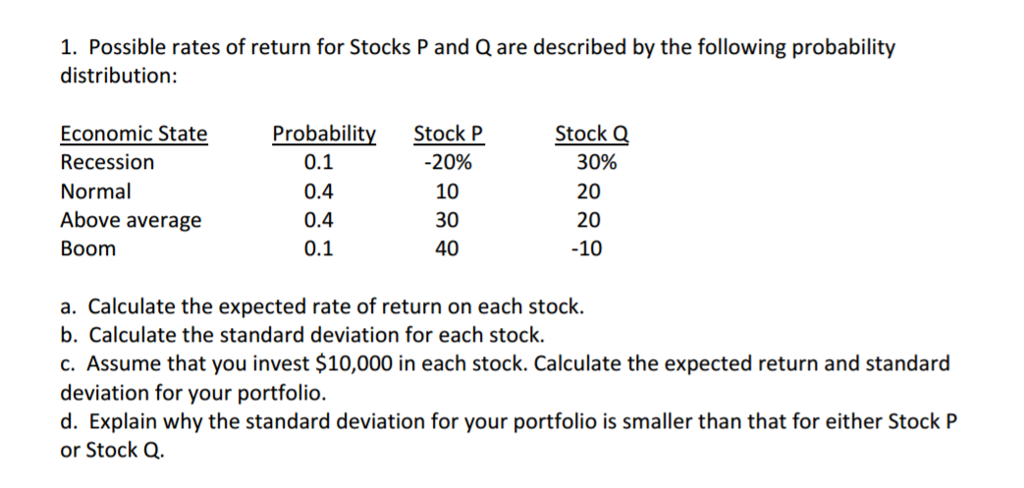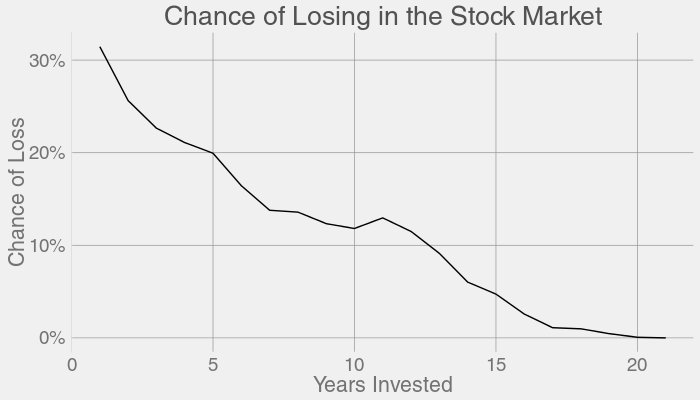
You've heard about technical analysis, but do you know how to do it? Technical analysis is the art of looking back at the past to predict future events. This is one popular way to trade commodities and stocks. Here's a quick guide. The following are the fundamental principles of technical analyses:
Price and volume charts
To make sense of stock charts, you should understand how supply and demand operate. High volume on days when stock prices are rising is an indicator that the stock is undervalued. High volume on days when stock prices are falling indicates strong selling pressure. Look out for days with high or low volumes to help you understand the price and volume charts. This will make it easier to buy and sell stock.
Moving average crossover
In technical analysis, a moving average crossover occurs when two different moving averages cross one another. The slower the moving average, more time has passed since its last crossover. A bearish signal can be generated if the long term moving average crosses over the short-term. A system with three moving averages is another way to use the moving-average crossover. If the medium-term move average crosses above that of the long term moving average, it is a bullish signal. Conversely, the short-term tending trend is indicated with the opposite.

Candlestick charts
Candlestick patterns are useful for technical analyses, in addition to analysing intraday trades. These patterns can be used for technical analysis, including determining support and resistance levels, pivot points and technical indicators. Additionally, they can also be used by individual decision-makers to create their own methods or algorithms. Refinitiv Workspace offers multiple types of charts that can be used for various purposes. These are some helpful tips to help you use candlestick chart for technical analysis.
Dow theory
If you are interested in using the Dow theory for technical analysis, you need to know the basic rules of the theory. These rules are known to be the tenets for Dow theory. These rules address key aspects of stock markets trends. These include paying close to market data, discerning patterns, and determining reverses. Technical analysis is designed to help you make profitable trading decision. But how do you use the tenets of Dow theory to effectively analyze stocks?
MetaTrader 4
MetaTrader 4 can be used to perform technical analysis. To do this, you must first create a trade. You can do this by using the 'Trade tab' of MetaTrader 4. To close your trade, click the 'Close Order" button once the window has opened. You will see the market bid as well as the offer.
MT4 NexGen tools
Advanced technical analysis tools can be used on the MetaTrader 4 platform using the MT4 NexGen tool. They provide you with a graphical interface and a specialized language for writing Expert Advisors and custom signals. They also provide access to MT4 NexGen - a set of advanced tools that include an economic calendar and correlations tools. If you're looking for the most advanced tools available, MT4 NexGen is definitely worth a look.

Technical analysis generates trading signals
If a pair of moving Averages crosses over, it can generate a trading signal. A shorter moving average can cross over a longer to create a sell signal. This crossover can be seen in individual stocks as well as broad market indexes. It happened on the S&P 500 mid-March 2020. However, this was not a prescient event. Most of the COVID-19 losses had been realized by that time.
FAQ
Can I put my 401k into an investment?
401Ks are a great way to invest. Unfortunately, not all people have access to 401Ks.
Most employers give their employees the option of putting their money in a traditional IRA or leaving it in the company's plan.
This means that you are limited to investing what your employer matches.
And if you take out early, you'll owe taxes and penalties.
Should I diversify my portfolio?
Diversification is a key ingredient to investing success, according to many people.
Many financial advisors will advise you to spread your risk among different asset classes, so that there is no one security that falls too low.
But, this strategy doesn't always work. In fact, it's quite possible to lose more money by spreading your bets around.
Imagine you have $10,000 invested, for example, in stocks, commodities, and bonds.
Imagine the market falling sharply and each asset losing 50%.
There is still $3,500 remaining. However, if all your items were kept in one place you would only have $1750.
So, in reality, you could lose twice as much money as if you had just put all your eggs into one basket!
It is important to keep things simple. Take on no more risk than you can manage.
What investment type has the highest return?
The truth is that it doesn't really matter what you think. It all depends upon how much risk your willing to take. One example: If you invest $1000 today with a 10% annual yield, then $1100 would come in a year. If you were to invest $100,000 today but expect a 20% annual yield (which is risky), you would get $200,000 after five year.
The return on investment is generally higher than the risk.
So, it is safer to invest in low risk investments such as bank accounts or CDs.
This will most likely lead to lower returns.
Conversely, high-risk investment can result in large gains.
You could make a profit of 100% by investing all your savings in stocks. But it could also mean losing everything if stocks crash.
Which one is better?
It depends on your goals.
For example, if you plan to retire in 30 years and need to save up for retirement, it makes sense to put away some money now so you don't run out of money later.
However, if you are looking to accumulate wealth over time, high-risk investments might be more beneficial as they will help you achieve your long-term goals quicker.
Remember: Higher potential rewards often come with higher risk investments.
It's not a guarantee that you'll achieve these rewards.
How do I determine if I'm ready?
It is important to consider how old you want your retirement.
Is there an age that you want to be?
Or would that be better?
Once you've decided on a target date, you must figure out how much money you need to live comfortably.
Then, determine the income that you need for retirement.
Finally, you must calculate how long it will take before you run out.
How can I reduce my risk?
You need to manage risk by being aware and prepared for potential losses.
One example is a company going bankrupt that could lead to a plunge in its stock price.
Or, a country could experience economic collapse that causes its currency to drop in value.
You can lose your entire capital if you decide to invest in stocks
This is why stocks have greater risks than bonds.
Buy both bonds and stocks to lower your risk.
This increases the chance of making money from both assets.
Another way to minimize risk is to diversify your investments among several asset classes.
Each class is different and has its own risks and rewards.
Stocks are risky while bonds are safe.
If you are interested building wealth through stocks, investing in growth corporations might be a good idea.
Focusing on income-producing investments like bonds is a good idea if you're looking to save for retirement.
What are some investments that a beginner should invest in?
Investors new to investing should begin by investing in themselves. They need to learn how money can be managed. Learn how to prepare for retirement. Learn how to budget. Find out how to research stocks. Learn how to read financial statements. How to avoid frauds How to make informed decisions Learn how diversifying is possible. Learn how to guard against inflation. Learn how to live within your means. Learn how wisely to invest. This will teach you how to have fun and make money while doing it. It will amaze you at the things you can do when you have control over your finances.
Do I need to invest in real estate?
Real Estate Investments can help you generate passive income. However, they require a lot of upfront capital.
Real Estate is not the best choice for those who want quick returns.
Instead, consider putting your money into dividend-paying stocks. These stocks pay you monthly dividends which can be reinvested for additional earnings.
Statistics
- 0.25% management fee $0 $500 Free career counseling plus loan discounts with a qualifying deposit Up to 1 year of free management with a qualifying deposit Get a $50 customer bonus when you fund your first taxable Investment Account (nerdwallet.com)
- If your stock drops 10% below its purchase price, you have the opportunity to sell that stock to someone else and still retain 90% of your risk capital. (investopedia.com)
- As a general rule of thumb, you want to aim to invest a total of 10% to 15% of your income each year for retirement — your employer match counts toward that goal. (nerdwallet.com)
- Over time, the index has returned about 10 percent annually. (bankrate.com)
External Links
How To
How to get started investing
Investing involves putting money in something that you believe will grow. It's about having confidence in yourself and what you do.
There are many avenues to invest in your company and your career. But, it is up to you to decide how much risk. Some people love to invest in one big venture. Others prefer to spread their risk over multiple smaller investments.
Here are some tips for those who don't know where they should start:
-
Do your research. Do your research.
-
Be sure to fully understand your product/service. Know what your product/service does. Who it helps and why it is important. Be familiar with the competition, especially if you're trying to find a niche.
-
Be realistic. Think about your finances before making any major commitments. If you can afford to make a mistake, you'll regret not taking action. Remember to invest only when you are happy with the outcome.
-
Think beyond the future. Consider your past successes as well as failures. Ask yourself whether there were any lessons learned and what you could do better next time.
-
Have fun. Investing shouldn’t cause stress. Start slowly, and then build up. Keep track and report on your earnings to help you learn from your mistakes. Remember that success comes from hard work and persistence.